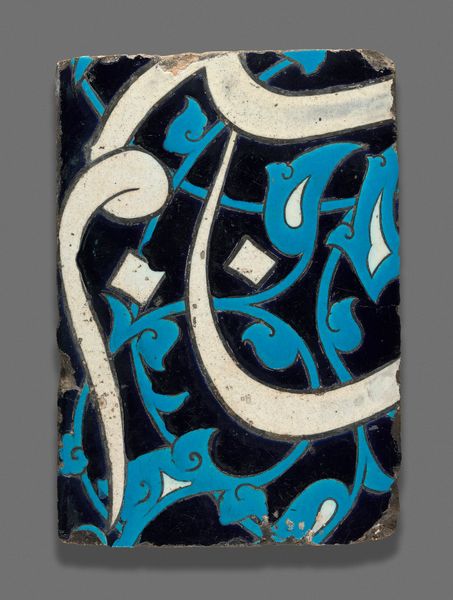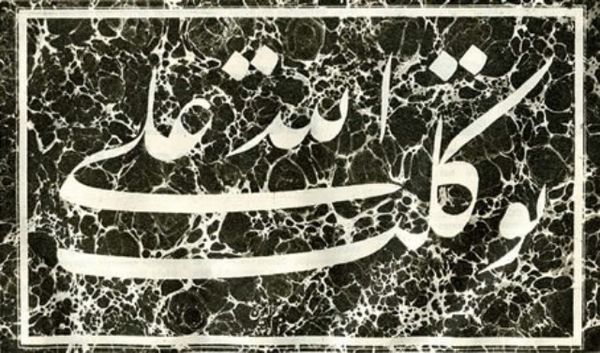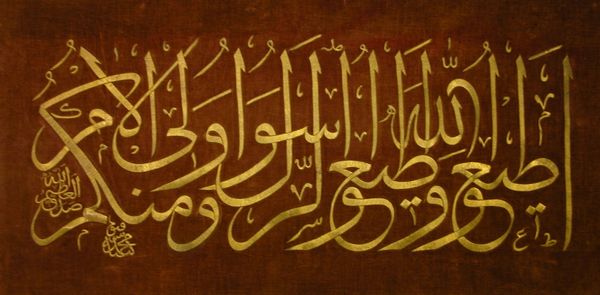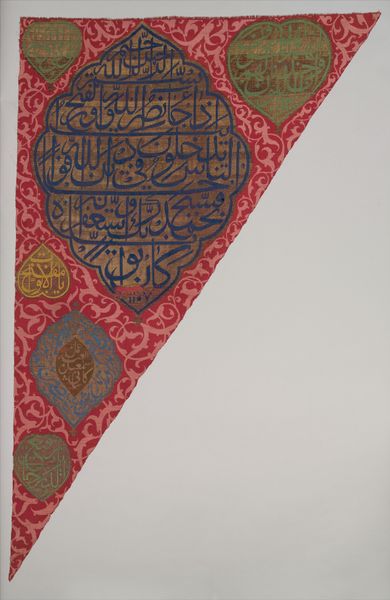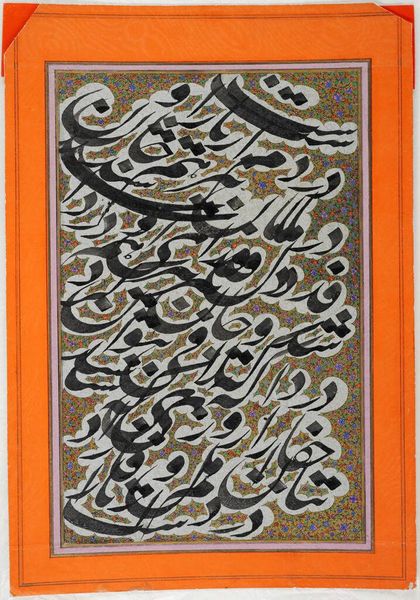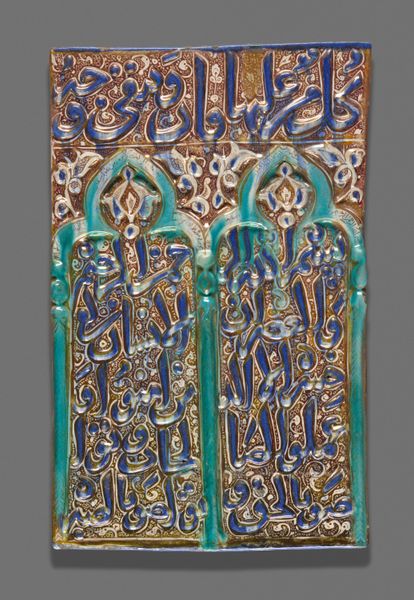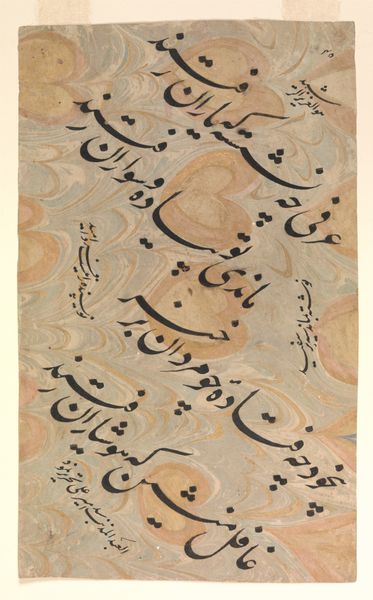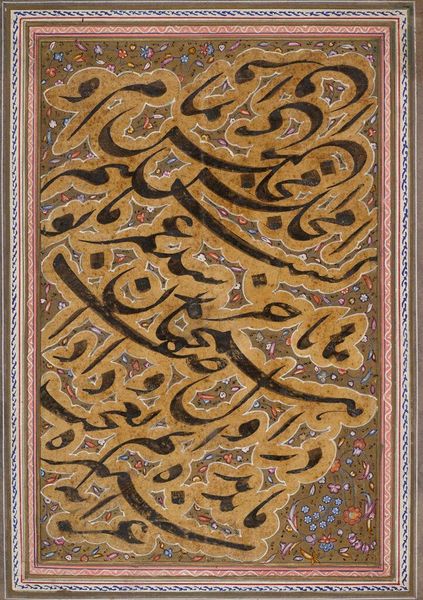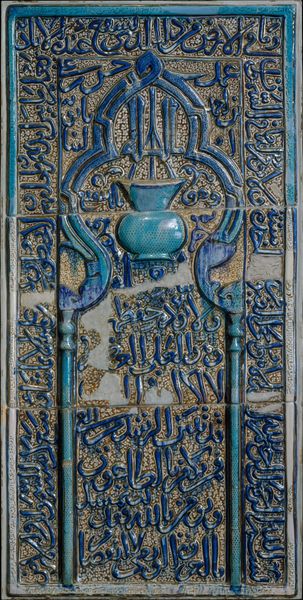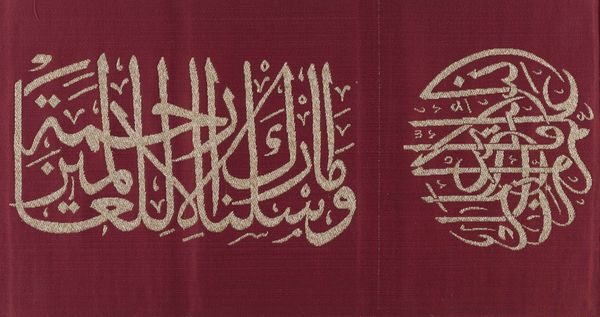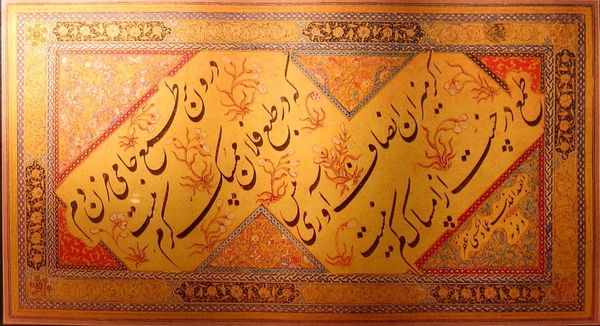
Painted tile with Qur’anic inscriptions late 13th - early 14th century
0:00
0:00
ceramic
#
medieval
#
ceramic
#
islamic-art
#
calligraphy
Dimensions: 8 1/2 x 14 x 1 in. (21.59 x 35.56 x 2.54 cm)
Copyright: Public Domain
Curator: This exquisite artifact is a painted tile with Qur’anic inscriptions, dating back to the late 13th or early 14th century. Editor: It’s stunning. There's something incredibly soothing about the cool blues and teals against the complex dark backdrop. It evokes a sense of calm contemplation. Curator: The calligraphy, the central element, conveys profound meaning through visual form. Notice how the artist employed the ceramic medium. The glazing gives the inscription prominence. Editor: It’s like the word becomes a beacon, materially elevated. The inscription itself, which I believe expresses religious tenets, gains more weight. Curator: Precisely. Islamic art has long harnessed calligraphy to embody the divine word and reflect on its inherent beauty. Each stroke, each curve carries its own symbolic significance, connecting viewers to a deeper spiritual realm. The continuous pattern around the calligraphy evokes notions of the infinite. Editor: The color choice and floral design give an interesting intersection between religious expression, social expression and gender. Did it function didactically to make these inscriptions, and hence theological understandings, available in spaces generally inhabited by women? The design isn't only visually pleasing but also has gendered undertones. Curator: That’s certainly a viable reading. Tiles like these weren’t mere decoration, but active participants in shaping identity. It could very well have been an empowering and inspirational source for female viewers. Editor: Seeing the detail work up close is deeply affecting. These objects serve as testaments to the resilience and adaptability of both artists and their cultural identities. It allows one to view art history as an evolving narrative. Curator: The piece underscores the lasting potency of visual symbols to preserve history and convey belief through epochs and across societies. The dialogue that arises is between tradition and ever changing present. Editor: The ability to connect across generations—that is what gives this seemingly quiet object such tremendous resonance. Curator: Indeed. Such tilework reflects centuries of continuous religious reflection. Editor: Beautiful.
Comments
minneapolisinstituteofart about 2 years ago
⋮
The Kashan ceramic workshops in Iran specialized in manufacturing luster-painted architectural tiles well into the fourteenth century. These tiles bear inscriptions from different verses from the Qur'an, which are translated as follows: His messenger who... (top) /...Do not know. (bottom) They were probably part of a mihrab, the sacred wall niche found in every mosque that orients the worshipper toward the holy city of Mecca during prayers. The opulence of the tiles illustrates the special attention given mihrabs in Muslim architecture; as the most important part of the mosque interior, these features had to stand out visually within a vast enclosure - hence, the bright colors and rich luster.
Join the conversation
Join millions of artists and users on Artera today and experience the ultimate creative platform.


